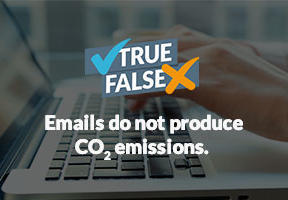What about the Energy Transition in France ?
10 min read
The in France is based on 4 pillars: the development of renewable energies, the revival of nuclear , and and sufficiency. The aim is to achieve carbon neutrality by 2050.
By the end of 2024, the French government will pass laws to set its new energy policy. Before finding out about the details of this policy, several documents and public interventions from national leaders laid down the main guidelines, that are summarized below.

© GettyImages
Reduce Energy Consumption
The aim is to reduce energy consumption by 50% by 2050, compared with 2021, with an intermediate target reduction of 30% in 2030. The ambition behind these objectives was consolidated by the promising results already achieved in 2022. Called on to reduce their gas consumption after the start of the War in Ukraine, the French population reacted positively, achieving a 12% reduction.
The means to achieve these objectives include greater sufficiency in all areas of energy use: reduce the number of journeys by car, travel by train rather than flying whenever possible, privilege active mobility methods such as cycling, not wasting at home, etc. The solutions also lie in technological and energy efficiency measures: the introduction of electric cars, renovating housing to improve insulation, the end of -fired boilers, the development of pumps, etc.
Revive Nuclear Power
Plans had been to reduce the share of nuclear power from 75% to 50% of the power generation mix, and one of the first measures toward this was to shut down the Fessenheim power station. In February 2022 however, a different direction was taken. Current reactors will be continued beyond 50 or 60 years, and six EPR2 reactors are being prepared to be started up in the next ten years, and studies will begin to determine the potential start-up of a further eight EPR. France is also going to investigate the implementation of a Small Modular Reactor (SMR) and develop its capacity to re-process nuclear waste. Note that the first EPR in Flamanville in the Manche region was started up in 2024, several years late and with significant extra costs.
Accelerate the Introduction of Renewable Energies
The first choice will be wind, where France has barely been present. No less than 36 offshore wind farms should appear by 2035, i.e. the equivalent of 6 EPR2 nuclear reactors. The targets for wind are less well-defined, as there is usually strong opposition from local communities.
The aim by 2030 is to double the pace of development of photovoltaic energy, biogas and district heating networks, and to quadruple the pace of deployment for geothermal energy.
These four priorities should help France gradually move away from fossil fuels and achieve carbon neutrality by 2050. They will improve the country’s energy sovereignty and help to reindustrialize its regions.






















